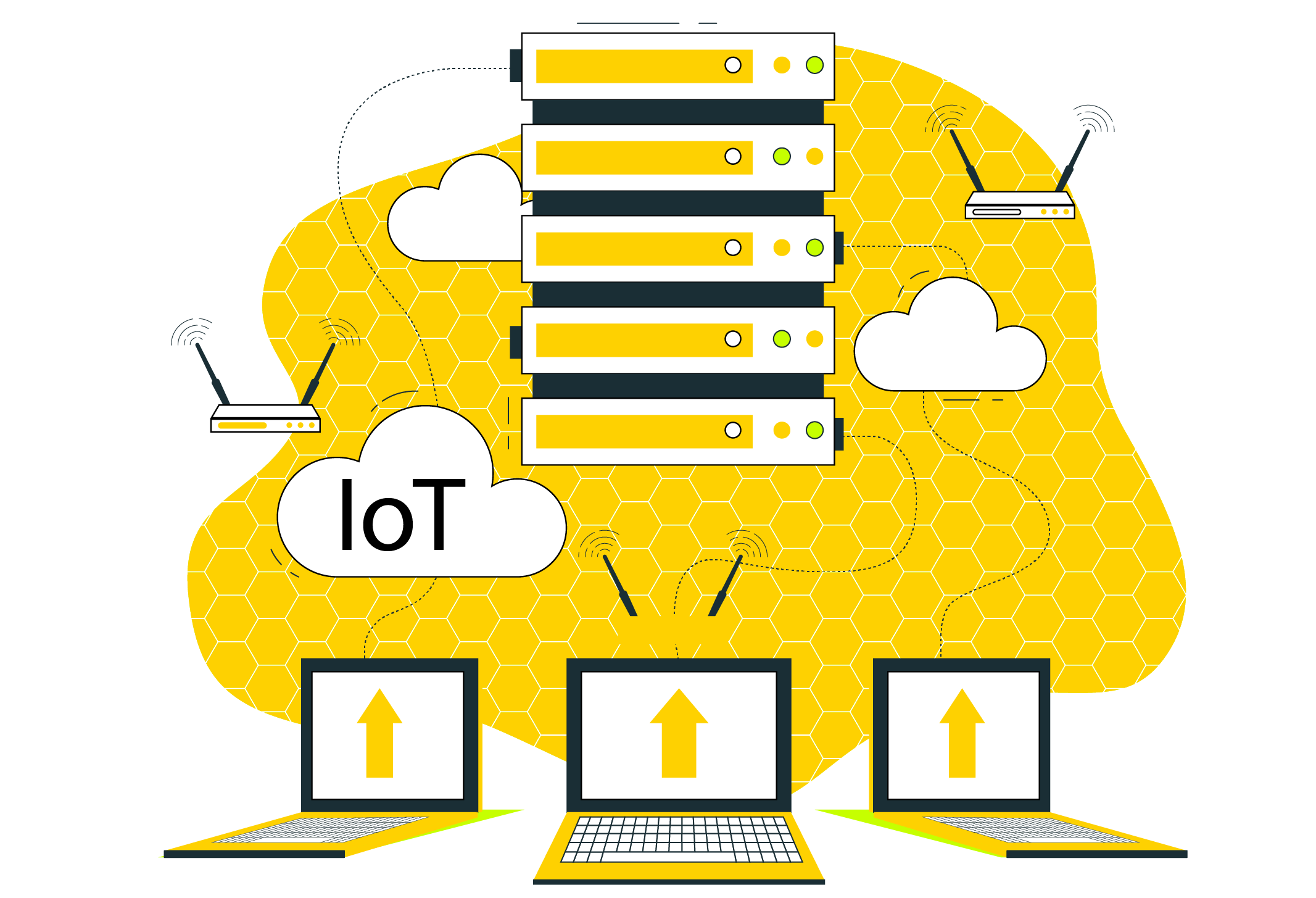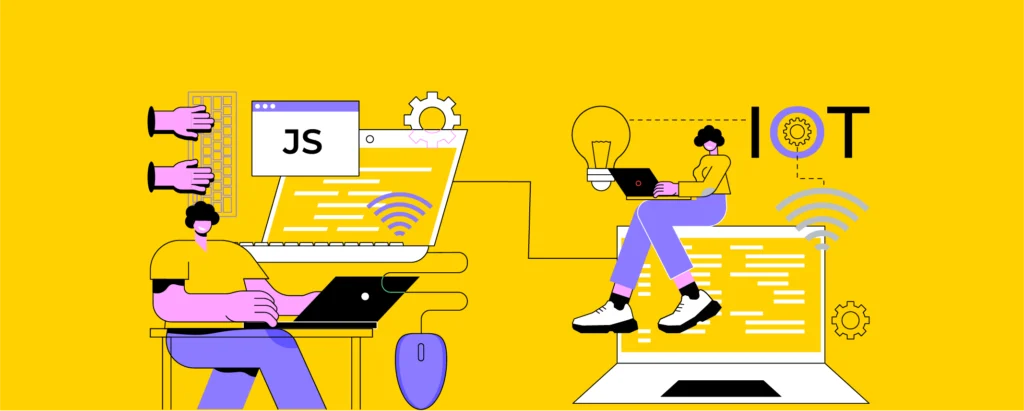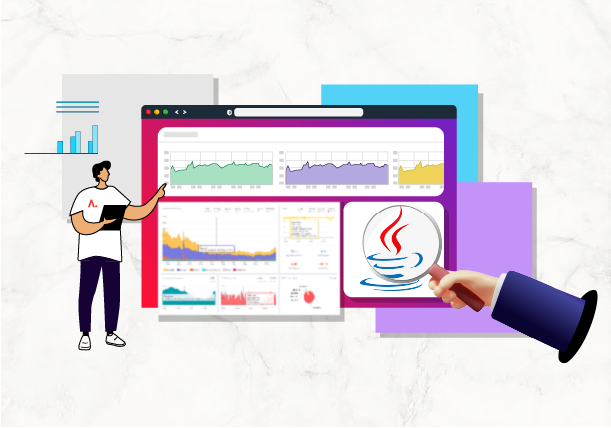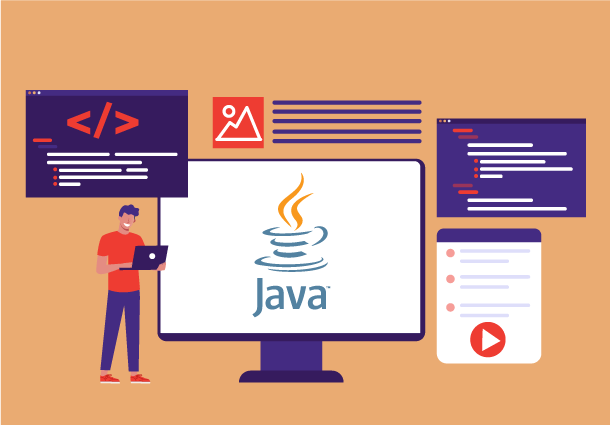The Dynamic Duo of IoT and Java Revolutionizes Interaction; Catalyzing Connectivity
The Internet of Things’ (IoT) integration with Java programming language is a beacon of innovation and connectivity in today’s quickly changing technological landscape. This combination has enormous potential to boost productivity and efficiency across a range of industries and promises to completely transform the way that devices interact and communicate.
IOT and Java coming together opens up a world of possibilities for developers and companies alike. Organizations can construct sophisticated and networked systems that transcend traditional boundaries by utilizing Java’s resilience and versatility in conjunction with the enormous capabilities of the Internet of Things. The combination of Java and IoT opens the door to a linked ecosystem where data flows easily and actions are carried out instantly, from wearables and smart homes to industrial automation and smart cities.
Fundamentally, this connection gives companies the ability to improve user experiences and open up new opportunities.  The combination of Java and IoT creates opportunities for innovation and uniqueness in a variety of areas, including predictive maintenance, remote monitoring and management, and personalized services. Organizations can also shorten time-to-market, simplify development processes, and future-proof their solutions against changing technology environments by embracing this fusion.
The combination of Java and IoT creates opportunities for innovation and uniqueness in a variety of areas, including predictive maintenance, remote monitoring and management, and personalized services. Organizations can also shorten time-to-market, simplify development processes, and future-proof their solutions against changing technology environments by embracing this fusion.
The possibilities to improve connectivity are endless when we examine the details of IoT and Java integration in more detail. By means of our investigation, we hope to illuminate the revolutionary effects of this combination, enabling companies to confidently and imaginatively welcome the era of interconnected technologies.
Java’s Role in Orchestrating the IoT Symphony; Fostering Connectivity and Innovation
The Internet of Things (IoT) is revolutionizing device interaction and communication in the digital age. It is a beacon of innovation. Fundamentally, the Internet of Things (IoT) is the smooth combination of sensors, actuators, and software that allows objects to gather and share data on their own. This game-changing technology fosters unprecedented connectivity, increases productivity, and optimizes processes across a range of industries, including manufacturing and healthcare.
The reliability of Java, a flexible and popular programming language known for its portability, scalability, and security features, is essential to the functioning of the Internet of Things. Java’s compatibility for a wide range of hardware platforms—from powerful servers to tiny embedded devices—makes it an ideal choice for Internet of Things development. This allows for smooth interoperability throughout the IoT ecosystem. Furthermore, the abundance of libraries, frameworks, and tools available for Java simplifies the development of Internet of Things applications, allowing programmers to easily design complex solutions.
Java’s compatibility for a wide range of hardware platforms—from powerful servers to tiny embedded devices—makes it an ideal choice for Internet of Things development. This allows for smooth interoperability throughout the IoT ecosystem. Furthermore, the abundance of libraries, frameworks, and tools available for Java simplifies the development of Internet of Things applications, allowing programmers to easily design complex solutions.
Java’s adaptability is evident in real-world Internet of Things deployments, where it powers a wide range of applications in different fields. Java, for example, makes it easier to create smart home gadgets that automate chores, improve security, and maximize energy efficiency. Similarly, in industrial environments, Java-based IoT solutions facilitate faster supply chain management, real-time equipment monitoring, and predictive maintenance, all of which increase operational effectiveness and reduce costs.
In addition, Java’s compatibility with cutting-edge networking protocols and communication standards guarantees smooth interoperability and connectivity in Internet of Things applications. Developers are able to design robust and scalable Internet of Things architectures that can manage enormous amounts of data processing and transmission in real time by utilizing Java’s strong networking features. Java’s intrinsic flexibility and dependability make it a vital tool for developing robust and long-lasting Internet of Things solutions that satisfy the needs of the linked world of today.
A new era of connectedness, innovation, and digital transformation is heralded by the combination of IoT with Java. Through the utilization of Java’s capabilities, developers may fully realize the potential of the Internet of Things (IoT), promoting value generation, enhancing operational effectiveness, and providing smooth user experiences for a variety of IoT applications. Java continues to be at the forefront of IoT technology adoption by businesses looking to gain a competitive edge. This allows organizations to navigate the complicated IoT landscape with confidence and agility.
Delving into the Foundations and Innovations of IoT; Unraveling the Intricacies
In this subsection, we set out to understand the underlying theories of the Internet of Things (IoT) and investigate the unique characteristics that set IoT solutions apart in the context of connectivity. We want to shed light on the complex inner workings of IoT technology and its revolutionary influence on contemporary connection landscapes through an examination of fundamental ideas and essential aspects.
IoT is essentially about connecting different systems and devices so they may exchange, gather, and transfer data in an easy-to-use manner.  We explore the fundamental ideas that underpin this networked environment, clarifying ideas like data processing, machine-to-machine communication, and sensor networks. Understanding these fundamentals helps us to better understand how IoT promotes efficiency, automation, and innovation across several domains by enabling the integration of physical and digital surroundings.
We explore the fundamental ideas that underpin this networked environment, clarifying ideas like data processing, machine-to-machine communication, and sensor networks. Understanding these fundamentals helps us to better understand how IoT promotes efficiency, automation, and innovation across several domains by enabling the integration of physical and digital surroundings.
We deconstruct the essential characteristics that set IoT cloud services in Java apart and enable them to surpass traditional connectivity paradigms. IoT solutions offer an array of functions that enable enterprises to fully utilize connected devices, including real-time data analytics, remote monitoring capabilities, scalability, and interoperability. We hope to shed light on the revolutionary potential of IoT in enabling smarter, more efficient operations and opening up new avenues for growth and innovation by thoroughly examining these qualities.
The Benefits of Integrating IoT with Java; Empowering Connectivity
We explore the many advantages that arise from the smooth combination of Java programming and Internet of Things (IoT) technology in this section. Organizations may achieve unprecedented connection, scalability, and flexibility in their solutions by bringing Java for IoT together. This opens up a world of possibilities. Let’s analyze the ways in which this dynamic pair transforms industries, spurs innovation, and helps companies succeed.
The promise of improved connectivity and interoperability is at the core of the Java and IoT integration. Java’s strong networking features allow IoT devices, sensors, and systems to communicate with one other and with each other smoothly, creating a unified environment in which data flows naturally. In addition to facilitating real-time data transmission, this interconnection paves the way for automated processes and intelligent decision-making, which boost operational effectiveness and open up new revenue streams for companies.
In addition, the combination of Internet of Things with Java yields scalability and flexibility—two qualities necessary to prosper in the fast-paced world of today. Because of Java’s scalability and platform freedom, enterprises can create reliable IoT systems that can change and adapt to new needs and situations. Java offers the adaptability and agility required to expand smoothly and satisfy changing business objectives, whether it’s overseeing a small-scale implementation or managing a sophisticated IoT ecosystem spanning numerous devices and platforms.
Organizations can change their operations, optimize workflows, and provide customers with unmatched experiences by combining the power of Java and IoT. Wide-ranging benefits of this connection include improving asset tracking, streamlining supply chain management, facilitating smart city projects, and revolutionizing healthcare delivery. Upon delving into the complexities of integrating IoT with Java, we reveal the revolutionary possibilities that are awaiting enterprises prepared to welcome this technological convergence. Come along on this adventure with us as we rethink the future of connectivity and open up new possibilities.
Navigating IoT-Java Integration: Overcoming Security and Compatibility Hurdles
Businesses have many obstacles when it comes to IoT-Java integration, particularly in the areas of security and compatibility. IoT devices are becoming more and more commonplace across many industries, which raises security worries regarding possible weaknesses and breaches. It is critical to address these issues in order to guarantee the security and integrity of data processed and sent by Internet of Things systems.
Resolving potential compatibility problems between various IoT device and Java framework versions is one of the main hurdles in IoT using Java integration. The swift advancement of IoT technology and Java programming languages frequently results in disparities in protocols and standards, impeding the smooth integration of the two. These incompatibilities may prevent Java-based apps from interacting with Internet of Things devices, leading to inefficiencies and operational bottlenecks.
IoT-Java integration techniques must include strong encryption mechanisms and stringent restrictions on access in order to address security concerns. To strengthen IoT systems against illegal access and data breaches, strong authentication methods and end-to-end encryption protocols should be used. Furthermore, proactive threat detection techniques and ongoing monitoring increase the IoT infrastructures’ resistance to changing cyberthreats.
Using agile development techniques and version control procedures can help to expedite the integration process when resolving compatibility issues. In order to mitigate compatibility difficulties, regular updates and patches are applied to Java frameworks and IoT devices to ensure conformity with the most recent standards and protocols. Likewise, the utilization of middleware solutions and API management platforms enables smooth communication and compatibility between Java applications and IoT devices.
Businesses may fully utilize connected ecosystems by overcoming the challenges of IoT-Java integration with a deliberate focus on security and compatibility. By overcoming these obstacles, enterprises may take advantage of the strength and diversity of the Java programming language, as well as the transformative potential of IoT technology. Proactive steps to solve security and compatibility issues are essential for promoting innovation and optimizing company value as the IoT ecosystem continues to change.
Recapitulating IoT-Java Integration Advantages and Charting Innovations with Pattem Digital
The combination of IoT and Java shines as a beacon of innovation in the fast-paced digital world of today, providing countless opportunities for connectivity, scalability, and security. Businesses are opening up new possibilities for productivity, efficiency, and consumer interaction as they look to take use of Java development services and the potential of IoT devices. At Pattem Digital, we are aware of the integration’s revolutionary potential and are prepared to support businesses at every stage of their journey. We enable businesses to confidently and precisely traverse the complexity of connected technologies thanks to our expertise in Java programming and IoT development. We set out on a journey together to create a future where intelligent automation and seamless connectivity completely transform the way we work, live, and engage with the outside world.





